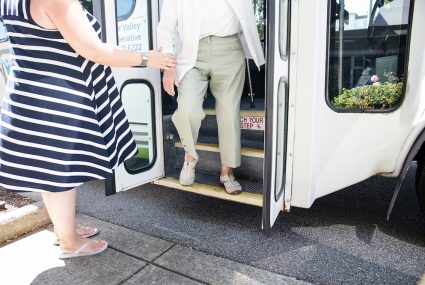We’ve all had it happen at one point or another: we’ve tripped over shoes, slipped on a wet floor, or bumped into something in the dark. These incidents are usually pretty minor since our reflexes allow us to quickly bounce back. However, as we get older, those reflexes tend to be a little slower, which can turn a fall into a very serious situation.
For seniors, it’s important to think about ways to keep living spaces safe and easy to navigate. Doing so will reduce the risk of falls and other injuries. Thankfully, it’s easy to spot potential trouble spots and make a few adjustments to ensure the home is safe for your loved one.
Ways to Keep Your Living Space Safe
The first step to keeping your home safe is to be aware of the potential dangers around you. A good way to approach home safety is to go room by room. Rooms that are more prone to injuries (such as kitchens and bathrooms) will likely need a little more attention, whereas other spaces can follow a more general set of safety guidelines. Let’s take a look at some of the most common hazards present in homes and what you can do to make each room safer.
Keep clutter off the floors
One of the most common hazards is tripping. A shoe that has been left in front of the door, a cord that sticks out, or a foot that gets caught on the corner of a rug in the living room – these are all relatively small issues that can cause serious injuries for seniors. Fortunately, this is a relatively easy fix. Walk around the home and remove anything that blocks the path in high traffic areas. Keep hallways clear of small objects such as shoes or books and make sure any electrical cords or cables are tucked away or taped down. The edges of area rugs can also be tacked down to prevent tripping. Hallways should be kept as clear as possible, so try to avoid furniture in them if possible.
Pay attention to spills
This one is important for all areas of the home but is particularly important for the kitchen, bathroom, and any room with hard floors. If you happen to spill something on the floor, make sure it gets cleaned up right away. If you decide to wait and clean in up later, you could forget and you (or someone else) could end up slipping on the spill.
Give yourself enough light
Many injuries happen as a result of not being able to clearly see the obstacles in front of you. This is especially important for seniors, as it is common for them to experience reduced vision in low light situations. If your overhead lights don’t give you enough light, add extra lamps to your room. You can also install night lights hallways, bathrooms, or any other areas where you might need to get to at night. This will ensure you don’t fumble around for the light switch in the dark, or worse – try to walk around the house in the dark.
Make your bathroom easier to use
Bathrooms are a common spot for seniors to experience falls. Due to their many potential hazards, bathrooms might require a little more work to make them safer. Let’s start with the tub or shower: ensure the surface inside is skid-proof and always use a bath mat with a non-slip backing. You can also install grab bars inside the shower and near the toilet to make it easier to get up and sit down. Shower seats can be great for those who have trouble standing in the shower.
Make your medication easier to remember
Medication mix-ups can happen pretty easily, especially when there are multiple pills to take each day. There are a couple of ways you can make this easier for your loved one to remember on their own. The first is to sort their medication for them using a special pill organizer. This makes it easier for them to see what to take each day and at which time. Another option is to skip the pill sorting step and have their medication packaged in special single dose bubble packs at the pharmacy, which makes it easier to remember when to take everything.
How Bria Communities Keeps Residents Safe
At Bria Communities, we take great care to ensure our residents are safe in their homes. Each residence is designed with the safety of seniors in mind, with built-in features that make it easy to get around. The hallways have sturdy railings to assist with balance, while the bathrooms have bars near the toilets and showers to make it easier to get up. Hallways are wider to make it easy for residents who use walkers, wheelchairs, or scooters to navigate the buildings with ease. Of course, our staff members are always close by in case anyone needs a hand. We’re always there to provide our residents with the level of support they need.

Comments